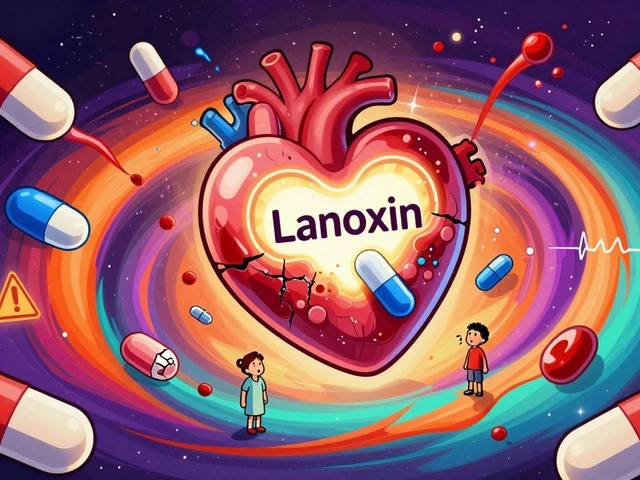Alcohol Dependence Medication: Options, How They Work, and What to Expect
When dealing with Alcohol Dependence Medication, a class of drugs designed to help people stop or reduce drinking by targeting cravings, withdrawal symptoms, or the body's reaction to alcohol. Also known as alcohol use disorder medication, it forms a core part of modern recovery plans.
One of the most recognized agents is Disulfiram, a medication that creates an unpleasant physical response when alcohol is consumed, effectively acting as a deterrent. Another widely used option is Naltrexone, an opioid antagonist that reduces the rewarding feelings associated with drinking, making it easier to stay sober. Acamprosate, helps restore the balance of brain chemicals disrupted by chronic alcohol use, easing cravings during early abstinence is also a staple in many treatment protocols.
Why Medication Matters in Alcohol Recovery
Alcohol dependence medication alcohol dependence medication isn’t a magic bullet, but it does give the brain a better chance to heal while the person works on lifestyle changes. Studies show that combining medication with counseling or support groups cuts relapse rates dramatically. For example, patients on naltrexone who attend weekly therapy sessions report a 30% higher abstinence rate than those relying on therapy alone. This synergy illustrates the semantic triple: "Medication enhances therapy effectiveness," and "Therapy supports medication adherence."
Choosing the right drug depends on several attributes: the severity of dependence, presence of liver disease, co‑occurring mental health issues, and personal preferences about side effects. Disulfiram’s aversive reaction is powerful but requires strict abstinence to avoid dangerous reactions. Naltrexone works well for people who still experience cravings after detox, while acamprosate is favored when liver function is a concern because it’s renally cleared. Understanding these attributes helps patients and clinicians match the drug to the individual’s profile.
Beyond the three main drugs, there are newer compounds and off‑label uses that are gaining attention. For instance, gabapentin is sometimes prescribed to smooth out withdrawal tremors, and baclofen has shown promise in reducing cravings for some patients. These adjuncts illustrate the triple: "Adjunct medications support primary alcohol dependence medication," and "They target specific withdrawal symptoms." Including them in a treatment plan can fill gaps that the primary agents don’t cover.
Timing also matters. Starting medication during the acute detox phase can prevent severe withdrawal, but some patients benefit from a brief drug‑free period to assess side effect tolerance. Post‑detox, maintaining medication for at least 3‑6 months is common practice, though long‑term use is safe for naltrexone and acamprosate when monitored. This relationship—"Medication duration influences relapse risk"—is a key factor for anyone planning a sustainable recovery.
Side effects vary across drugs. Disulfiram may cause flushing, nausea, and severe reactions if alcohol is ingested. Naltrexone can lead to nausea, headache, and occasional liver enzyme elevation, so baseline liver tests are advised. Acamprosate often produces mild gastrointestinal upset but is generally well‑tolerated. Knowing these attributes lets patients weigh benefits against potential discomfort, a critical step in shared decision‑making.
Cost and accessibility are practical concerns too. Generic versions of naltrexone and disulfiram are widely available and covered by many insurance plans, while acamprosate can be pricier but may qualify for assistance programs. The economic attribute—"price influences adherence"—shouldn’t be overlooked because a drug that’s too expensive will likely be abandoned.
Finally, support mechanisms play a huge role. Medication alone rarely resolves the psychological and social drivers of alcohol use. Engaging in counseling, peer support groups, or family therapy creates the environment where medication can do its job effectively. This creates the semantic link: "Medication works best within a comprehensive support system."
Below you’ll find a curated selection of articles that dive deeper into each medication, compare their pros and cons, and offer practical tips for safe use. Whether you’re just starting to explore treatment options or you’re seeking a deeper understanding of how these drugs fit into a broader recovery plan, the posts ahead provide the details you need to make an informed choice.
Acamprosate vs Alternatives: Efficacy, Safety, and Choosing the Right Treatment
A detailed comparison of Acamprosate with naltrexone, disulfiram, baclofen and topiramate, covering efficacy, safety, dosing and how to pick the right AUD medication.





